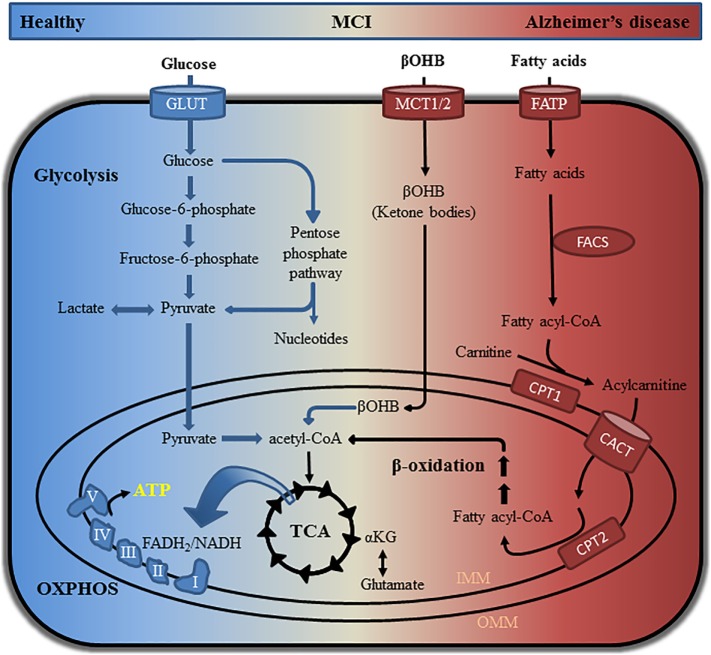Figure 1.
Pathways involved in glucose, ketone body, and lipid metabolism. Glucose can be catabolized via glycolysis or the pentose phosphate pathway to produce intermediate metabolites that promote cell growth and function. Oxidation of glucose generates pyruvate, which is shuttled into mitochondria where it is converted to acetyl-CoA. Utilization of acetyl-CoA in the TCA cycle generates several intermediates that can be used for nucleotide, lipid, and amino acid synthesis. Electrons from the reducing equivalents NADH and FADH2 are used for oxidative phosphorylation (OXPHOS) to generate ATP. Healthy neurons are highly glycolytic catabolizing glucose via glycolysis and the TCA cycle in order to produce ATP through OXPHOS. Metabolic instability and decreased glucose utilization in AD patients can be detected by metabolomics approaches and fluorodeoxyglucose positron emission tomography. Impaired glycolytic processes in the brain can cause a shift toward the use of alternative fuel sources including ketone bodies and fatty acids. Processing of ketone bodies and fatty acids can produce acetyl-CoA for use in the TCA cycle and OXPHOS. αKG, alpha-ketoglutaric acid; βOHB, β-hydroxybutyric acid; CACT, carnitine acylcarnitine translocase; CPT1/CPT2, carnitine palmitoyltransferase 1/2; FACS, fatty acyl-CoA synthetase; FADH2, flavin adenine dinucleotide + hydrogen (H); FATP, fatty acid transport protein; GLUT, glucose transporter; IMM, inner mitochondrial membrane; MCT1/MCT2, monocarboxylate transporter 1/2; NADH, nicotinamide adenine dinucleotide (NAD) + hydrogen (H); OMM, outer mitochondrial membrane; TCA, tricarboxylic acid.

